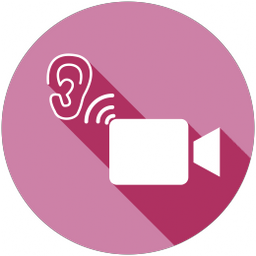Do you ever think about the first impression you leave on others?
If you are like most people, you do. After all, we only have one chance to make a great first impression, right?
But leaving a memorable first impression is not just relevant for people. It’s also very important for online retail brands. In fact, leaving a positive first impression elevates returns, sales, and brand experiences!
Curious to find out how? This blog will explain how brands can use their product delivery packaging to leave an exceptional first impression on their customers.
Posted in Archive, Strategy
published on Wednesday, 05 August 2020
Social media usage is still rising. In addition to more and more users (321 million new users since 2019), the time spent has increased: we’re spending more than 40 percent of our waking hours online. As the public is online, so are your customers, and your business should as well.
Posted in Research, Archive
published on Wednesday, 22 July 2020
Did you know consumers spend $5.400 per year on average on impulse purchases of food, clothing, household items, and shoes?
That shouldn’t be quite a surprise. In one way or another, everyone has experienced a sudden, often powerful, and persistent urge to buy something immediately. In most cases, this regards something we hadn’t planned for.
It could be that one time you visited your local grocery store and realized there had been a huge discount on your favorite Italian rice. Or that time you walked into a high-end jewelry shop and suddenly purchased that sparkling golden Swedish watch on the shelf, regardless of the financial risks involved.
Now that was our impulse buying urge in full effect.
So how can we trigger these inherent impulse buying desires that consumers already have to stimulate impulse purchases?
Posted in Research, Archive
published on Wednesday, 08 July 2020

Ideas. They are the rocket fuel behind many of life’s best decisions. And some of the worst.
Whether you’re an entrepreneur in search of fruitful business avenues, a storyteller pondering on a thought-provoking new narrative, or just a tourist contemplating what new things to do for holiday. For many of these decisions, we tend to turn inside for answers. In a very real way, we’re internally brainstorming with ourselves, trying to wrap our hands around these pearls of wisdom we call ideas.
Initial ideas differ widely in their vividness and concreteness. We tend to love vivid ideas. The entrepreneur could suddenly connect the dots between a brand-new technology and a target market that has a need that just screams to be met. The writer can conjure entire plotlines out of thin air in a matter of seconds, beginning, middle and end. And the tourist may suddenly decide to go bungee jumping in the crater of a sleeping volcano – I know I did.
But do these sudden crystal-clear notions always provide the best path to go forward? You may be able to think of some of your own initially brilliant ideas that turned out to be lukewarm at best – I know I do.
And what about those other ideas that were not fully crystalized yet, causing you to throw them out of the window? Of course, the million-dollar question is: how many of those prematurely discarded ideas would have turned out to be brilliant?
Countless of studies have been done on how individuals evaluate the creativity of their final ideas. But the psychology behind how we evaluate and build upon the initial figments of those ideas during the creative process itself has rarely been studied.
Posted in Archive, Strategy
published on Tuesday, 23 June 2020
Price comparison is key to consumer buying decisions. Does price presentation predict purchase choice? A 2019 American Marketing Association study published by David Hardisty, Dale Griffin, and Thomas Allard confirmed the critical impact of price comparison framing on consumer marketplace decisions.
Research results demonstrate that consumers consistently chose a more expensive product among their options when the price difference was emphasized rather than the actual item price. Four individual studies confirmed this conclusion when measuring the impact of price framing on customer choices.
Posted in Archive, Strategy
published on Tuesday, 09 June 2020





